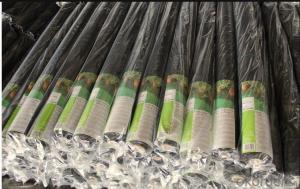Plastic Pipe Compression Fittings: Easy Connections for Plumbing
When it comes to plumbing, we often think of the big picture: the water heater, the pipes, the faucets. But have you ever considered the smaller, yet incredibly important, components that hold it all together? One such component is the plastic pipe compression fitting. These little guys are the unsung heroes of the plumbing world, and today, we’re going to dive into their world and see what makes them so special.
The Basics: What Are Plastic Pipe Compression Fittings?
Plastic pipe compression fittings are connectors used to join plastic pipes without the need for soldering, welding, or glue. They are easy to install and require minimal tools, making them a favorite among DIY enthusiasts and professional plumbers alike. The fitting consists of a body, a compression ring, and a nut that, when tightened, compresses the ring against the pipe, creating a secure seal.
Why Choose Plastic Over Metal?
You might wonder why anyone would choose plastic over the traditional metal pipes and fittings. Well, let’s break it down. Plastic fittings are lighter, easier to handle, and less prone to corrosion. They also offer better insulation properties, making them ideal for colder climates. Plus, they’re cost-effective, which is always a bonus.
Easy Installation: A Step-by-Step Guide
Installing plastic pipe compression fittings is a breeze. Here’s a simple guide to get you started:
1. Prepare Your Workspace: Make sure you have a clean, dry area to work in. This will help prevent any damage to the fitting or the pipe.
2. Measure and Cut: Measure the length of the pipe you need and cut it to size. Use a pipe cutter for a clean, precise cut.
3. Insert the Pipe: Slide the end of the pipe into the fitting until it’s about 1/8 inch from the end of the fitting.
4. Add the Compression Ring: Place the compression ring into the groove on the fitting. Make sure it’s seated correctly.
5. Tighten the Nut: Using a wrench, tighten the nut onto the fitting until it’s snug. Be careful not to overtighten, as this can damage the fitting or the pipe.
6. Check for Leaks: Once everything is tightened, turn on the water and check for any leaks. If you find any, you may need to tighten the nut a bit more or replace the compression ring.
The Benefits of Using Plastic Pipe Compression Fittings
There are several benefits to using plastic pipe compression fittings, including:
– Easy Maintenance: They are simple to repair or replace if needed.
– Versatility: They can be used with a variety of pipe materials, not just plastic.
– Longevity: With proper installation and care, these fittings can last for years.
– Safety: They are less likely to cause injury due to their lightweight nature.
Common Misconceptions About Plastic Fittings
Despite their many advantages, there are some common misconceptions about plastic pipe compression fittings:
– They’re Not as Strong as Metal: While it’s true that plastic is not as strong as metal, modern plastic fittings are designed to be incredibly durable and can withstand a lot of pressure.
– They Can’t Handle High Temperatures: Some people believe that plastic fittings can’t handle high temperatures, but many are rated for use in hot water systems.
– They’re Only for Amateurs: This is simply not true. Professional plumbers use plastic fittings for their ease of installation and cost-effectiveness.
Real-Life Applications and Testimonials
Plastic pipe compression fittings have been used in a variety of applications, from residential homes to commercial buildings. Many users have shared their positive experiences, praising the ease of installation, durability, and cost savings.
The Future of Plastic Pipe Compression Fittings
As technology advances, we can expect to see even more improvements in the design and materials used for plastic pipe compression fittings. They are likely to become even more durable, versatile, and efficient.
Wrapping Up
In conclusion, plastic pipe compression fittings are an excellent choice for anyone looking to make plumbing connections with ease and efficiency. They offer a range of benefits, from easy installation to long-lasting performance. So, the next time you’re working on a plumbing project, don’t overlook these little heroes. Give them a try, and you might just be surprised at how much they can do for you.

